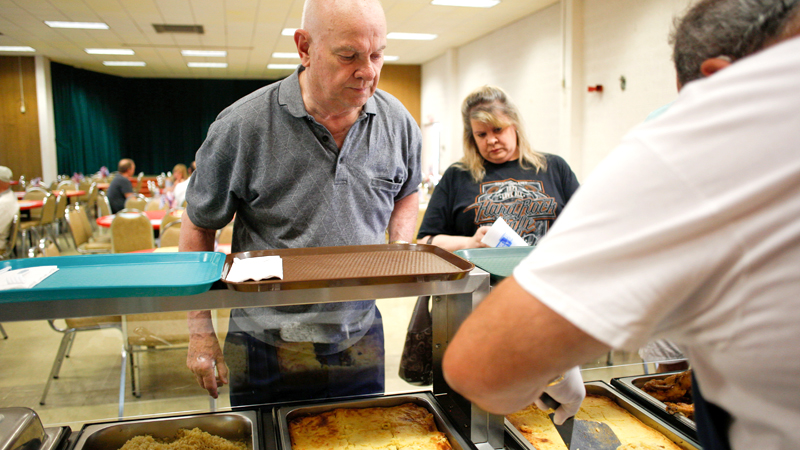Four-day fest showcases all things Greek

By SEAN BARRON
news@vindy.com
BOARDMAN
If you’re in the mood to temporarily sideline your dinner tradition, you have an opportunity to replace common foods such as pizza, steak and seafood with plates of pastisto, spanakopita and moussaka.
“We [also] have the traditional lamb on a spit, Greek style, and chicken, Greek style,” Greg Giannios said as he ticked off the main buffet items that filled containers near those with pastisto (meat and noodles topped with sauce), moussaka (a Greek-style lasagna with eggplant, potatoes and zucchini) and spanakopita (a phyllo pastry filled with spinach as well as feta and two other kinds of cheese).
Giannios, who’s the head cook, was giving a sample Saturday afternoon of some of the main menu items you could say are the meat of the annual St. John’s Glendi Greek Festival at St. John the Forerunner Greek Orthodox Church, 4955 Glenwood Ave.
The four-day fest, which began Thursday afternoon, continues from noon to 10 p.m. today at the church.
The event’s primary aim is to showcase Greek culture, foods, customs and traditions, organizers said.
Also on the menu are Greek rice, green beans and grape leaves, added Giannios, whose wife, Ann Giannios, is the parish council president who’s spearheading the festival.
For those who might be more satisfied with something a la carte or in sandwich form instead of a full dinner, $12 Greek platters are available that consist of saganaki (often prepared in a small frying pan and known as “flaming Greek cheese”), kefalograviera (a hard cheese often produced from sheep’s and goat’s milk) and tiropita (a layered pastry sometimes with three cheeses and wrapped in filo).
“There’s a lot of goats and lambs in Greece, so literally everything has cheese in it,” joked Chryse Ellinos, a lifelong St. John church member who was among those selling the items.
Also available are several kinds of traditional and Greek beers.
Of course, no such festival would be complete without the large variety of desserts and pastries.
“This is the sweetest room we have, and the sweetest workers. Everything is homemade,” Arlene Denney said proudly while describing the long row of pastries.
Denney, a 49-year church member who has baked, sold and displayed many of the treats, noted that some of the top dessert sellers during the fest have been the traditional baklava cheesecake, along with ekmek (shredded phyllo dough topped with vanilla custard and whipped topping) and galaktoboureko (a custard between layers of buttered phyllo topped with honey and syrup).
For those trying to watch their diet, amygdalota was available. That gluten- and fat-free pastry is a type of almond cookie from Chios, one of the five largest Greek islands in the Aegean Sea.
Helping Denney in her sweet endeavors was Svetlana Sprankle, a Boardman High School senior.
“I’ve made about 40 dozen at times for every 10 pounds of flour,” George Zografides said in describing the formula he used to produce loukoumades, small golden balls of fried dough similar to doughnut holes.
While others were busily baking loaves of sweet bread nearby, Zografides was simultaneously and carefully placing the raw dough balls into a hopper to fry for about 80 seconds in peanut oil. After that, they were ready to be dipped in a syrup that was a combination of water, sugar, honey, cinnamon sticks, orange and lemon, he said.
Some attendees also browsed through a bookstore that contained, among other things for sale, Greek icons, compact discs, books on Greek culture, bracelets, T-shirts, cookbooks, ball caps, headbands with stones, dolls, prayer robes and other religious symbols.
 43
43
